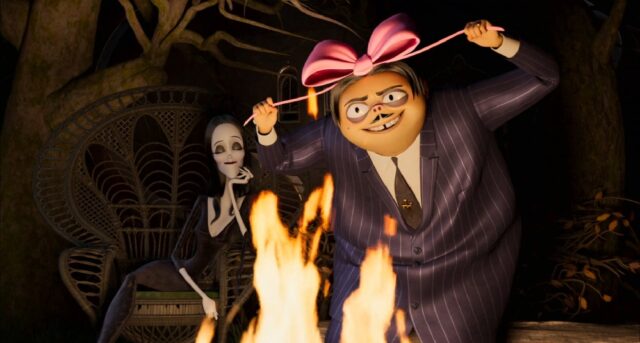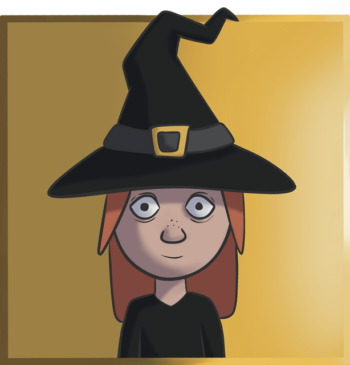Definition:
A “bonfire,” or “campfire,” is a controlled outdoor fire.
A “pyre” is a structure, usually made of wood, for burning a body as part of a funeral rite or execution.
A “witch pyre” refers to a pyre specifically constructed for the execution of individuals accused of witchcraft.
Etymology:
The term “campfire” combines “camp,” from the Latin “campus,” meaning field or open space, and “fire,” from the Old English “fyr,” indicating a combustion process that produces heat and light. Together, they denote a fire made at a camping site.
The term “bonfire” comes from the Middle English “bonefire,” meaning a fire of bones. Historically, such fires were used to burn bones, and the term evolved to denote any large outdoor fire.
The term “bål” comes from Old Norse “bál,” which directly translates to “bonfire” in English. It retains its meaning across Scandinavian languages, including Danish, Norwegian, and Swedish. “Bål” is a polysemy of the name “Baal,” a major god in various ancient Middle Eastern cultures, including the Canaanites and Phoenicians. Baal was sometimes referred to as a sun god, and fire was a symbol of his power and presence.
The term “pyre” comes from the Latin “pyra,” meaning “funeral pile,” which in turn is derived from the Greek “pyr,” meaning “fire.”
The term “witch pyre” combines “witch,” from the Old English “wicce,” meaning a female sorcerer or practitioner of magic, and “pyre,” from the Latin “pyra,” meaning “funeral pile” or “fire.”
Description:
Bonfires are typically used for celebrations, ceremonies, or the disposal of waste. They are often associated with communal gatherings, where people come together to enjoy the warmth and light. Campfires are typically smaller, making them more practical to gather around and often used to cook food such as hotdogs or marshmallows over the flames.
Storytelling around campfires is a tradition that spans across cultures and history. It is an age-old practice that brings people together, often in a setting where the flickering flames and surrounding darkness create a perfect atmosphere for sharing tales. Many ancient cultures, including Native Americans, Celts, and Aboriginal Australians, have used campfire storytelling as a means to pass down myths, legends, and important cultural narratives from one generation to the next. Campfires have been the setting for sharing folklore and myths, which often include elements of the supernatural, moral lessons, and explanations of natural phenomena.
Pyres are commonly used in various cultural and religious traditions for cremation ceremonies.
A pyre typically consists of a wooden framework built to support a body. The wood is often arranged in a specific manner to ensure efficient burning. A pyre is traditionally set outdoors in open fields, on riverbanks, or in designated cremation grounds.
A witch pyre typically consisted of a wooden stake or post to which the accused was tied, surrounded by a pile of wood and other combustible materials. A witch pyre was often set up in public squares, marketplaces, or open fields to serve as a warning to others.
It is important to note that witches do not exist. A witch is a fictional concept. These women were burned alive by Catholics and Protestants for fictional crimes.
Articles:
Guy Fawkes Night
Definition: “Guy Fawkes Night,” also known as “Bonfire Night,” is a holiday and commemorative day observed on November 5th, primarily in the United Kingdom. Etymology: The term “Guy Fawkes Night”…
Halloween
Definition: “Halloween,” celebrated on October 31st, is a holiday known for activities such as trick-or-treating, costume parties, carving pumpkins into jack-o’-lanterns, and visiting haunted attractions. Etymology: The term “Halloween” is…
Midsummer
Definition: “Midsummer”, also known as “the summer solstice,” is a holiday and celebration that occurs around the time of the longest day of the year, typically between June 20 and…
Walpurgis Night
Definition: “Walpurgis Night”, also known as “Walpurgisnacht,” is a traditional celebration held on the night of April 30th, leading into May 1st. Etymology: The term “Walpurgis Night” derives from “Walpurgisnacht”…
Symbolism:
Fire has many symbolic associations, most popular by Christians is that Jesus can be symbolized by fire. Walking through fire is symbolic for being forgiven for your sins, which is most likely why it was said by many that witch burning cleanse the soul and rid the community of evil influences. Today, witch pyres are a symbol of historical injustice and persecution. They are remembered in literature, film, and academic studies as a dark chapter in Christian history, reflecting the dangers of religion, mass hysteria and the scapegoating of marginalized groups.
When building a campfire, the wood is usually arranged in a teepee shape, giving the campfire the symbolism of the Tower of Babel.
A bonfire or campfire surrounded by rocks seen from above resembles an eye, giving it the symbolism of a lie.
In the movie “Ice Age” (2002), a scene takes place during a moment of respite for the main characters Sid the sloth, Diego the saber-toothed tiger, Manny the mammoth, and the human baby they are trying to return to its tribe. The characters are gathered around a campfire at night, creating a warm and intimate atmosphere. The baby begins to walk and heads towards Sid, who encourages the baby to come to him with enthusiasm. Unexpectedly, the baby changes direction and walks towards Diego instead. Diego, who is conflicted and guilt-ridden about his secret plan to betray the group, is visibly uncomfortable with the baby’s trust. Sid comments on how touching it is that Manny is so protective of the baby, highlighting the developing bond among the group members. Diego, feeling guilty and conflicted, acknowledges Manny’s kindness by saying, “Yeah, Manny’s a really nice guy.” This scene highlights the symbolism of a lie around a campfire as Diego is planning to deceive them. Click to watch the video clip.

In the movie “Ice Age” (2002), there is a humorous and memorable scene featuring Scrat, the saber-toothed squirrel, interacting with a campfire. Scrat is holding his prized acorn on a stick, which is encased in ice. He is trying to melt the ice away by roasting it over the campfire. Scrat carefully positions the acorn over the flames, with an eager expression, hoping to finally free and eat it. As Scrat roasts the frozen acorn, the heat causes an unexpected reaction. The acorn pops and transforms into a popcorn. Scrat’s eyes widen in shock as he watches the acorn change, clearly not what he anticipated. This scene highlights the fantasy symbolism of a campfire, as acorns do not turn into popcorn; it is corn kernels that turn into popcorn when heated. Click to watch the video clip.
In the movie “Ice Age” (2002), Manny the mammoth, the human baby, Sid the sloth, and Diego the saber-toothed tiger are gathered around a small campfire. They watch as Sid the sloth, whose tail is on fire, runs in circles around the campfire in a desperate attempt to extinguish the flames. Running in circles is a symbol of madness, which is quite fitting as running is not going to extinguish the flames. This scene highlights the fantasy symbolism of a campfire. Click to watch the video clip.

In the movie “The Addams Family 2” (2021), there’s a scene where Gomez Addams is standing behind a campfire, animatedly telling his son Pugsley a scary story. The atmosphere is tense as Gomez builds up to the climax of the tale. When he reaches the punchline, he dramatically reveals the shocking twist: “a puppy!” This unexpected revelation frightens Pugsley, who reacts with alarm, highlighting the Addams family’s unique sense of humor and their love for the macabre. This emphasizes the fantasy symbolism around a campfire, as a puppy is cute and nothing to be scared of. Click to watch the video clip.

The movie “Sausage Party” (2016) centers on a sausage named Frank who lives in a supermarket. Frank, along with other grocery store items, dreams of being chosen by shoppers and taken to the “Great Beyond,” which they believe to be a paradise. However, the grocery store items soon discover the horrifying truth that their ultimate fate is to be consumed by humans. In one scene, Frank sits around a campfire as he is told how the unexpirable grocery store items invented a story to trick all the grocery store items into believing in the Great Beyond, instead of knowing the truth about what happens after they are purchased and exit the store. This scene is a metaphor for how religion is a scam. Click to watch the video clips.

The TV series “Dexter” follows the life of Dexter Morgan, a forensic blood spatter analyst for the Miami Metro Police Department who leads a double life as a vigilante serial killer. In season 4, episode 7, Dexter joins other fathers and their sons around a campfire. One father shares a scary story, which ends with a humorous twist. The boys laugh, but Dexter finds the story nonsensical. The group then asks Dexter to tell a scary story. He begins recounting the tale of a real serial killer known as The Trinity Killer. As Dexter describes, “Sometimes he’ll sneak up on a man and raise his hammer overhead, and then he’ll swing it down…” the father interrupts, finishing the story with, “And smash his own thumb and then go crying all the way home.” The boys laugh again, the father gives Dexter a strange look, and then announces it’s time for the boys to hit the sleeping bags. This scene underscores the campfire’s fantasy symbolism. The father felt Dexter’s real story was too frightening for the boys and used his imagination to censor it, ensuring the story remained suitable for the children. Click to watch the video clip.

Articles:
A
Definition: The letter “A” is the first letter of many alphabets, including but not limited to the modern English alphabet. Etymology: The symbol for the letter “A” originates from the…
Formation Around a Fire
Definition: A “formation around a fire” refers to a group of people or objects arranged in an organized pattern around a central fire. Etymology: The term “formation” comes from the…
St. John’s Bonfire
Definition: The “St. John’s Bonfire,” also known as “St. John’s Eve Bonfire” or “Midsummer Bonfire,” is a large bonfire traditionally lit on the evening of June 23rd, the eve of…
Witch’s Hat
Definition: A witch’s hat is a hat worn by a witch. It’s typically a tall pointed, cone-shaped black hat with a wide brim. Etymology: The term “witch” comes from the…
Wizard’s Hat
Definition: A wizard’s hat is a hat worn by a wizard. It’s typically a tall pointed, cone-shaped hat with a wide brim, adorned with stars, moons, or other mystical symbols….
Religion:
Pyres are used in various cultural and religious practices around the world:
Cremation on a pyre is a common practice in Hinduism. The body is placed on a pyre and set alight, often on the banks of a river. This practice is believed to help the soul‘s journey to the next life. The Rigveda and other Hindu texts describe the use of pyres for cremation, emphasizing the release of the soul from the physical body.
Historical Viking funerals sometimes involved cremation on a pyre, often on a ship, symbolizing a final journey.
In some Buddhist cultures, cremation on a pyre is practiced to signify the release from the cycle of rebirth. While not prescribing a specific method, Buddhist texts highlight the importance of impermanence and the release of attachment to the physical body.
In Sikhism, cremation is preferred, with the body typically placed on a pyre and burned, signifying the return to the elements.
Cremation is not commonly referenced in the Bible, where burials are more frequently mentioned. However, the use of fire in various rituals is significant, symbolizing purification and divine presence.
Major religious texts, such as the Bible, do not explicitly endorse the burning of witches, though interpretations of certain passages have been used to justify witch hunts, such as “Thou shalt not suffer a witch to live,” (Exodus 22:18).






